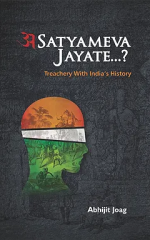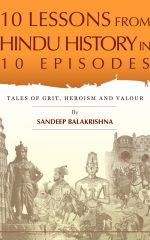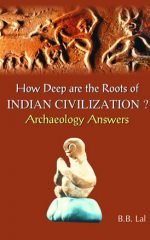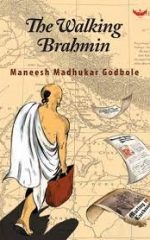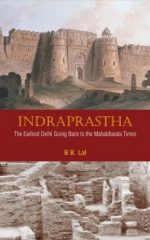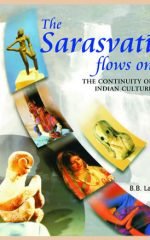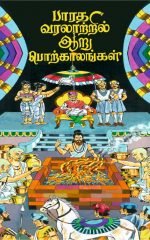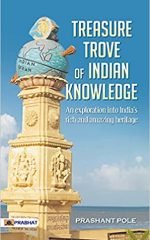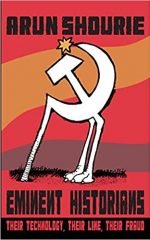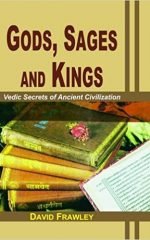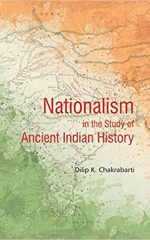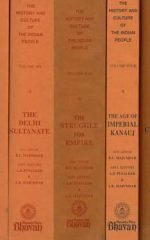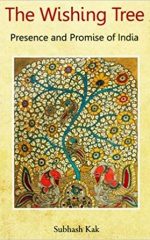Asatyameva Jayate…? Treachery With India’s History
Asatyameva Jayate…? Treachery With India’s History
Contents :
- The Aryan Invasion Theory
- India’s History: A Story of Defeats?
- Negationism – What is Inconvenient, Never Happened!
- Emperor Ashok and Akbar – Were They Really ‘Great’?
- Sufi…You Too?
- India’s Social, Cultural and Economic Backwardness: Reasons and Narratives
- Plying the Spindle Certainly Yields Yarn…. but Independence?
- Why Bring Up this Discussion Now?
10 Lessons from Hindu history in 10 Episodes
10 Lessons from Hindu history in 10 Episodes
The historical essays in this work demonstrate Hindu grit, heroism, valour, resistance, losses and triumphs.
How Deep Are the Roots of Indian Civilization? Archaeology Answers
How Deep Are the Roots of Indian Civilization? Archaeology Answers
In the present book. Professor BB Lal tells the reader, with ample photographic illustrations, that almost every aspect of Indian culture is deeply rooted in the past, which is at least 5,000 years old.
The Walking Brahmin
The Walking Brahmin
The Walking Brahmin replete with maps and photographs, offers a unique insight on what really happened during the war of 1857.
Indraprastha: The Earliest Delhi Going Back to the Mahabharata Times
Indraprastha: The Earliest Delhi Going Back to the Mahabharata Times
In 1954-55 the author laid out a trench in the southern part of the mound and found shards of the Painted Grey Ware which is the characteristic ceramic industry met with at all the sites associated with the Mahabharata story. This discovery was confirmed by subsequent excavations as well. These excavations revealed that from the Mahabharata times (circa 1000 bce), the site continued to be occupied up to the British times —a span of 3000 years. Thus, Indraprastha is the earliest and longest-lived city of Delhi.
The Sarasvati Flows On – The Continuity of Indian Culture
The Sarasvati Flows On – The Continuity of Indian Culture
The author shows that there is no evidence whatsoever to suggest any invasion, much less by the Aryans. On the contrary, there is ample evidence to demonstrate that many of the present-day cultural traits are rooted in the Harappan Civilization.
The Rigvedic People
The Rigvedic People
Archaeologically, during the aforesaid period and within the above-noted territory, there existed one and only one civilization, namely the Harappan. Hence, the Harappan Civilization and the Vedas are but two faces of the same coin (pp. 122-23). Further, the evidence from Kunal and Bhirrana (pp. 54-55) establishes that the roots of this civilization go back to the 6th-5th millennia BCE, indicating thereby that the Harappans were the sons of the soil and not aliens. Thus, the Vedic people, who were themselves the Harappans, were Indigenous and neither Invaders nor Immigrants .
பாரத வரலாற்றில் ஆறு பொற்காலங்கள் 6 Glorious Epochs ( Tamil )
பாரத வரலாற்றில் ஆறு பொற்காலங்கள் 6 Glorious Epochs ( Tamil )
This is the Tamil translation of the epic ‘Bharati Itihasathile Saha Soneri Pane’
written in Marathi by Swatantrya Veer Vinayak Savarkar.
Translated into several languages, the book was published in Tamil in 1990 by Sri Annamalai.
Treasure Trove of Indian Knowledge
Treasure Trove of Indian Knowledge
This collection of India’s achievements in the past by Prashant Pole is based on actual facts. Written lucidly this highly readable book is the Treasure Trove of Indian Knowledge.
Eminent Historians
Eminent Historians
Arun Shourie documents the ways in which our history textbooks have been doctored by leftist historians. Thoroughly researched and riveting, this study brings to light the techniques and frauds that a cabal of some of our best-known academicians has used to promote themselves, and to acquire control over institutions. And then to put these supposedly academic institutions to use.
Gods, Sages and Kings: Vedic Secrets of Ancient Civilization
Gods, Sages and Kings: Vedic Secrets of Ancient Civilization
Brief : The book challenges the accepted views of the origins of civilizations in a profound way and thus causes the reader to re-examine what it means to be a human being.
Nationalism in the Study of Ancient Indian History
Nationalism in the Study of Ancient Indian History
The present volume examines the evolving research scenario and concludes that these pioneer historians never wilfully distorted any historical evidence and thus their nationalism did not stand in the way of objective historical investigations. The allegations levelled against them by communists roughly since the 1960s were nothing but propaganda ploys to draw attention to themselves as ‘progressives’ and thus capture with governmental support the country-wide institutions in the field of history .
The History and Culture of the Indian People : 11 Volumes Pack
The History and Culture of the Indian People : 11 Volumes Pack
This is the first history of India written exclusively by her own people which brings to bear on the problems a detached and critical appreciation. A team of over sixty scholars of repute present herein a comprehensive and up-to-date account of the political, socio-economic and cultural history of the Indian people.
Six Glorious Epochs of Indian History ( Hard Cover )
Six Glorious Epochs of Indian History ( Hard Cover )
About the Book : This book by SwatantryaVeer Savarkar covers the following epochs of Indian history …
The Wishing Tree: Presence and Promise in India
The Wishing Tree: Presence and Promise in India
The Wishing Tree provides an in-depth overview of the revolutionary changes that have occurred during the …

